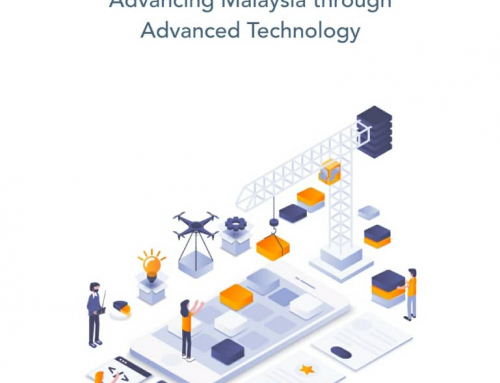Countries that often rank near the top on both indices—the US, UK, Sweden, Denmark, the Netherlands—underscore close relationship between pro-IP policies and innovation-driven economies. For instance, in the US, innovative and IP-intensive industries create over 45 million American jobs and contribute nearly 40% of its GDP.

India must act upon the link between strong IP protections and a sustainable innovation ecosystem.
India is at an inflection point. As the world’s fastest growing large economy, it will soon join the coveted high middle-income country club. At the same time, India needs to continue making progress with its economic reform agenda to sustain growth. To help cement its geo-strategic position as a rising democratic and economic powerhouse in the Indo-Pacific, it needs to create 1 million jobs a month, invest heavily in R&D-driven innovation, and integrate into the global value chains swiftly. If its economy falters, India risks falling into the ‘middle-income trap’—the point when a rapidly-growing country experiences a loss of economic momentum, because it failed to make the transition to a high-income, high-innovation economy. Among those who successfully avoided this trap, common catalysts paved the way for innovation-led growth and commercialisation. This begs the question: What kind of innovation—and enabling ecosystem—does India need?
To answer this, the US Chamber of Commerce’s Global Innovation Policy Center led a conversation last month at the Raisina Dialogue—convened by ministry of external affairs and ORF—in Delhi. “The future belongs to those who can innovate,” asserted Israeli PM Benjamin Netanyahu. Systematic progress in three key areas can sustain India’s growth momentum and hurdle the middle-income trap. One, India can harness its prowess as a services-led economy to create a knowledge-based and innovation-driven economy. Two, India can put legal and economic infrastructure in place to commercialise its established role in incremental, frugal innovation, while creating an enabling environment for transformative, high-end innovation. Three, through strong public policy and administrative efforts, India can position itself to transition from facilitating innovation to inspiring innovation as an innovator nation.

To facilitate such progress, India would benefit from an innovation ecosystem backed by a strong IP rights framework that incentivises domestic innovation, attracts foreign investors, boosts collaboration, and improves access to innovation. With the National IPR Policy, India is moving in the right direction. The policy’s education and awareness programmes constitute a bottom-up approach, shattering the myth of elitism attached to IP as a tool for innovation. While Budget FY19 covered digital innovation, India should consider including innovation as an all-encompassing, cross-sector budgetary item. India could earmark specific funding to boost support for state universities to serve as labs to research ideas, incubate them and spur innovation. This will enable universities to partner with foreign firms and collaborate with India’s own emerging start-up ecosystem to test new ideas, scale up, and reap the dividends of innovation. Evidence-based policy-making should guide India’s IP framework. Pricing policies for innovative products should reflect the return of fair value for innovation. Pricing policies that do not properly value innovation have the impact of undermining and devaluing IP and access to innovation.

To answer this, the US Chamber of Commerce’s Global Innovation Policy Center led a conversation last month at the Raisina Dialogue—convened by ministry of external affairs and ORF—in Delhi. “The future belongs to those who can innovate,” asserted Israeli PM Benjamin Netanyahu. Systematic progress in three key areas can sustain India’s growth momentum and hurdle the middle-income trap. One, India can harness its prowess as a services-led economy to create a knowledge-based and innovation-driven economy. Two, India can put legal and economic infrastructure in place to commercialise its established role in incremental, frugal innovation, while creating an enabling environment for transformative, high-end innovation. Three, through strong public policy and administrative efforts, India can position itself to transition from facilitating innovation to inspiring innovation as an innovator nation.
To facilitate such progress, India would benefit from an innovation ecosystem backed by a strong IP rights framework that incentivises domestic innovation, attracts foreign investors, boosts collaboration, and improves access to innovation. With the National IPR Policy, India is moving in the right direction. The policy’s education and awareness programmes constitute a bottom-up approach, shattering the myth of elitism attached to IP as a tool for innovation. While Budget FY19 covered digital innovation, India should consider including innovation as an all-encompassing, cross-sector budgetary item. India could earmark specific funding to boost support for state universities to serve as labs to research ideas, incubate them and spur innovation. This will enable universities to partner with foreign firms and collaborate with India’s own emerging start-up ecosystem to test new ideas, scale up, and reap the dividends of innovation.
Evidence-based policy-making should guide India’s IP framework. Pricing policies for innovative products should reflect the return of fair value for innovation. Pricing policies that do not properly value innovation have the impact of undermining and devaluing IP and access to innovation.ndia must act upon the link between strong IP protections and a sustainable innovation ecosystem. The US Chamber International IP Index, releasing February 8, ranks countries on factors indicative of robust IP systems; the Global Innovation Index—a collaborative measure between Cornell University, INSEAD and WIPO—ranks countries on various facets of innovation. Countries that often rank near the top on both indices—the US, UK, Sweden, Denmark, the Netherlands—underscore close relationship between pro-IP policies and innovation-driven economies. For instance, in the US, innovative and IP-intensive industries create over 45 million American jobs and
contribute nearly 40% of its GDP.As India charts its growth trajectory and occupies the global high table, innovation should be the centrepiece of its geo-economic calculus. The transitional experiences of vast democracies like the US, Israel and Japan, as well as smaller ones like the Asian Tigers, show that innovation is the bedrock of sustainable economic growth and the key to moving past the middle-income trap. Against the backdrop of economic slowdown in China, India will need to substantially enhance its disruptive innovation capabilities in order to step up and play its important role as a strong, democratic and economic alternative in the Indo-Pacific. India has two options: continue as a customer and service-provider to innovation-driven economies, or be an innovator itself. The right policy choices today will help secure the obvious option for India tomorrow.






